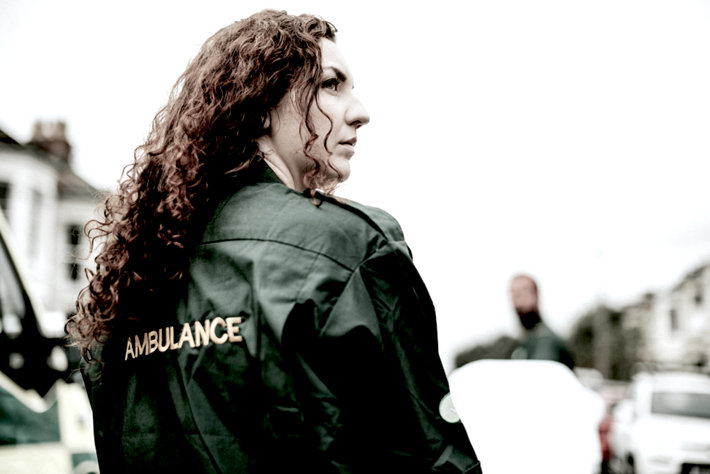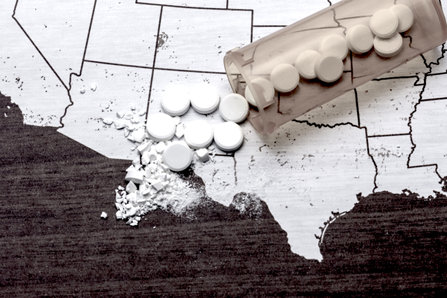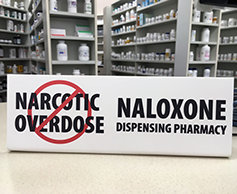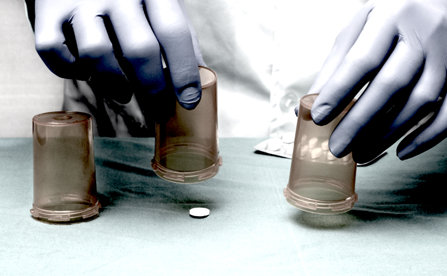Overdose Deaths Decline: Does This Mean We Are Successfully Fighting This Problem?

Most likely, nearly every American has noticed the opioid epidemic raging in all corners of our country. In some towns, residents can count twenty or even thirty people they know who have been lost to overdoses. In states like West Virginia and Ohio, state agencies have struggled to keep up with the losses. For years, the number of people dying from drug overdoses has been climbing up… up… up. But finally, in just the last several months, the numbers have started a slight decline. Does this mean our methods of addressing the drug problem are finally being successful?
There’s only one answer: Maybe. It all depends on your definition of success.
If you consider success to be fewer lives being lost, then yes, we are having more success. Saving lives is a very good thing.
But if you consider success to be a resolution of the problem of addiction to opioids, then the answer might be “No.” It might take a little more analysis of the overall situation to understand why.
How Much of a Decline Has There Been?
In fact, the decline has been gentle. But after decades of watching these numbers climb, even a gentle decline provides hope.
The Centers for Disease Control and Prevention (CDC) reports monthly estimates and final figures for overdoses. Here’s a selection of their numbers from the last few years.
- January 2015: the reported number of deaths in the prior twelve months was 47,523.
- July 2015: 50,301
- January 2016: 52,902
- July 2016: 58,525
- January 2017: 65,571
- July 2017: 69,504

Now, as we get closer to present time, the numbers might not be 100% complete. They could change slightly as more autopsy and toxicology reports are finalized. But here are the currently available numbers for overdose deaths from late 2017 and the first half of 2018.
- November 2017: 70,723 (the peak of the graph)
- December 2017: 70,699
- January 2018: 70,012
- February 2018: 69,484
- March 2018: 68,864
- April 2018: 68,297
- May 2018: 67,616
So Why Are These Numbers Down?
In the last few years, many, many hard-working people have worked diligently to implement solutions to all these deaths. It’s been a hard battle to gain acceptance for some of these measures. And while there are finally fewer deaths, no one has yet provided a comprehensive analysis of which of these measures have contributed the most to saving lives. To pour the coals on the most life-saving activities, we will need that analysis.
In the meantime, let’s take a look at the factors that may have contributed to these declining numbers.
Widespread Distribution of the Opioid Antidote Naloxone

Across the country, the majority of drug overdose deaths are due to legal and illegal opioids such as heroin, oxycodone, hydrocodone and fentanyl. When a person overdoses on an opioid, a form of naloxone (brand-named Narcan) is quickly sprayed into his (or her) nose by a first responder. This drug quickly rouses a person who was unconscious and perhaps dying. Particularly powerful opioids may require multiple doses of naloxone.
Some state and local officials have objected to the widespread distribution of this antidote, refusing access to anyone but medical personnel. Gradually, more non-medical personnel such as police, firefighters, community members working with the addicted, drug users themselves and their families have been able to obtain naloxone.
According to a 2015 report, between 1996 and June 2014, 26,463 overdoses were reversed using naloxone. Right there you can get a general idea of how many more deaths there might have been if naloxone didn’t exist.
There is no downside to saving lives. But naloxone is not a solution for anything other than a single overdose. As documented vividly by the New York Times in an article titled “1 Son, 4 Overdoses, 6 Hours,” some people repeatedly overdose in a short time, requiring first responders and EMTs to revive them again and again.
Less Carfentanil on the Illicit Drug Market
In the last five years, the illicit drug market has been flooded with opioids from the fentanyl family. Fentanyl is a prescription medication that is used as a painkiller for the most extremely painful conditions that no other painkiller would touch. Small quantities of this drug have long been diverted from medical supplies to be used by those addicted to opioids. But these days, nearly all the fentanyl on the market is illicitly manufactured overseas or in Mexico.

Fentanyl comes in dozens of different forms, several of which are commonly detected in U.S. supplies. Carfentanil is one of the very strongest forms. To express how powerful fentanyl and carfentanil are, we’ll use morphine for comparison.
Heroin is two to five times stronger than morphine.
Fentanyl is 50 to 100 times more powerful.Methylfentanyl is 400 times more powerful.Carfentanil (only intended for large animal use) is 10,000 times more powerful.
Drug dealers have different methods of distributing drugs from this family:
- Add a little to a batch of heroin, making the batch more potent and thereby increasing the drug dealer’s profits;
- Press it into forms resembling prescription drugs so it can be sold to people seeking pills;
- Identify it as fentanyl and sell it to people looking for this drug;
- Mix it into non-opioid drugs like cocaine or methamphetamine, thereby trapping the unwary drug user in opioid addiction.
So unless a drug dealer identifies his product as being one from the fentanyl family, his buyers don’t know what they are getting. They don’t know how strong it is. And thus it is easy to overdose on this extremely powerful synthetic opioid.
In 2017, the Centers for Disease Control and Prevention published a report on how many times fentanyl and carfentanil had been identified in overdose deaths. This analysis found that fentanyl was present in 56% of opioid overdose deaths between July and December 2016. In 2,903 of these deaths, fentanyl was specifically identified as the cause of death. In 720 opioid overdose deaths, one of the other drugs from the fentanyl family (called an “analog”) was identified. The most common analog was carfentanil. It was identified in 389 of these deaths.
In an email to this author, Dr. Daniel Ciccarone of the University of California San Francisco commented that it’s possible that drug dealers have stopped dealing in carfentanil because it was simply too deadly. He referenced the decreased overdoses in Ohio, which in 2016 had the second highest overdose rate in the country. In 2017, there was a 17% drop in overdoses.
Opioid Users Being More Cautious about Controlling Their Doses
In early 2018, Dr. Ciccarone and fellow researchers published a study titled “Toots, tastes and tester shots” that documented the practices of those addicted to opioids and how they prevented their own overdoses. Because of the incredibly powerful drugs on the illicit market, some opioid users have developed methods of testing their drugs to determine what dose will prevent withdrawal symptoms or get them high without risking their lives.
These methods include:
- Snorting, smoking or orally tasting a small sample of the drug they are about to use;
- Preparing a partial injection of what they plan to consume, injecting it, waiting to see the effect, then preparing a second injection if needed;
- Preparing a single injection of the full dose, injecting half while leaving the needle in the vein, then injecting the rest if needed;
- Watching others consume some of the drug, especially others with more tolerance to opioids;
- Asking other drug users about their effects from the same batch of drugs;
- Always buying opioids from the same dealer who monitors potency.
All these methods have the possibility of reducing the risk of overdose. In addition, more people who use opioids and those around them are maintaining a stock of naloxone so they can rescue their friends when needed.
More Enrollment in Medication-Assisted Treatment Programs

Enrollment in programs that provide opioid-addicted patients with replacement drugs like methadone or buprenorphine (often formulated as Suboxone) has been increasing. Methadone is normally handed out to each patient daily in special clinics. Buprenorphine is normally distributed from medical offices after the doctor or another practitioner has been approved by the Substance Abuse and Mental Health Services Administration (SAMHSA).
Both these medications are themselves opioids and are addictive. When taken daily in controlled dosages, they do not get a person high. Since the individual still has a dose of an opioid in their body each day, they do not go through the severe symptoms of opioid withdrawal.
Gradually, the federal government has increased the number of patients that can be prescribed buprenorphine by a medical practitioner from 30 to 100 and now a maximum of 275. Nearly 58,000 doctors, nurses and other health practitioners have received authorization to prescribe this medication.
A person who complies with all the requirements of a medication-assisted treatment program (MAT) escapes the risk of overdose. Unfortunately, many do not comply. As documented by the New York Times, some choose a different drug to abuse or stop taking their prescribed medication so they can use a different opioid to get high.
Enrollment in a MAT program can save the lives of those who comply with the requirement. But a MAT program by itself does not enable a person to return to a drug-free life. Some people may find a practitioner who will help them stabilize on one of these drugs and also provide support and counseling so they can develop a healthier mindset. Then these patients can be weaned off MAT drugs and live drug-free. But there is no monitoring of buprenorphine providers to determine which ones offer the full scope of a recovery program, defined by SAMHSA as follows:
“Medication-assisted treatment (MAT) is the use of medications with counseling and behavioral therapies to treat substance use disorders and prevent opioid overdose.”
Are these 58,000 practitioners offering counseling and behavioral therapies along with the medication? And for those that are, have these services proven to be effective or are they being provided simply as a pretense of offering well-rounded recovery services? Follow-up studies on the results being achieved by these 58,000 practitioners would be worthwhile.
All these methods of alleviating our catastrophic loss of life to drugs are valuable because they save lives, and that is the starting point for our national recovery. We must keep people alive if they are to receive the kind of care that rehabilitates them, but we must not stop there. True national recovery from addiction means that those who have been addicted should receive care that enables them to break free from the desire to use drugs. Then they can truly create drug-free lives for themselves. Anything less will leave many of these people at risk of overdose or dependent on an opioid medication for the foreseeable future.


 ®
®